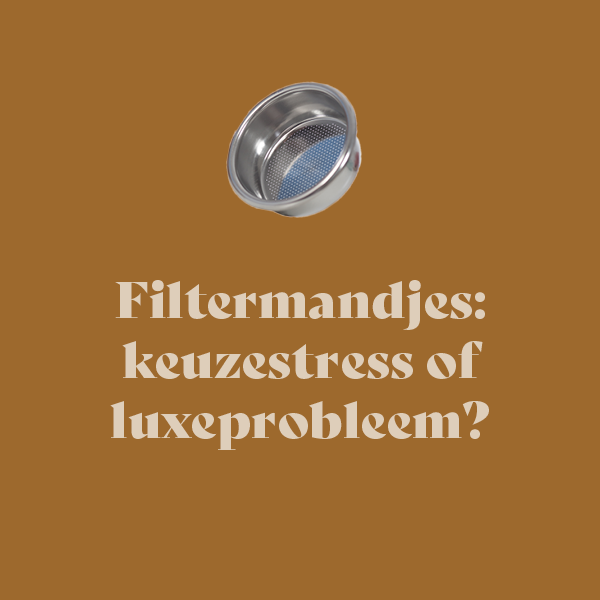Filter baskets are a luxury problem.

It used to be simpler. You bought an espresso machine and used the filter baskets that came standard with the machine. These worked fine and no further questions were asked. Fast forward to today and the range is a lot more extensive and complex. A quick guide through the filter basket landscape.
Are standard baskets of good quality?
Not always. Originally, standard filter baskets were not so accurate and uniformly finished. The holes at the bottom of the filter basket were not always the same size. This ensures that the water does not flow at the same speed everywhere. This causes channeling, the phenomenon where some parts of the coffee see more or less water pass through than the rest. If you were unlucky, some holes were not even perforated at all. In addition, the finish of the holes sometimes left something to be desired. If the edges of the holes have sharp edges, coffee particles can get stuck and block the hole, which in turn causes channel formation. Finally, standard filter baskets still have a curved shape today. This shape makes it easier to knock out the coffee puck, but ensures a less than optimal water flow. In short; there was room for improvement.
VST: An industry standard
VST is known by baristas as the standard when it comes to filter baskets. These filter baskets came on the market in the mid-1960s. They were characterized by their straight shape which resulted in more holes at the bottom. These holes were actually much better finished. All 725 holes are accurate to within 0.03mm. The combination of more and better finished holes ensures espresso with higher TDS values (there are more dissolved substances in the espresso) for a given grind, dosage and amount of espresso. Some brands such as La Marzocco now use standard VST baskets for all their espresso machines. In addition to VST, there is also IMS and Pullman. They also make competition filter baskets that are very accurately finished. On online forums you will find numerous comparative tests and unsalted opinions of all kinds of (home) baristas. The number of holes that these brands use plays a major role in this. IMS originally used 663 holes but often lost out to VST with 725 holes in comparative tests. When IMS started using 715 holes, the results of these tests became more similar. With its 876 holes, Pullman is often the winner with the highest TDS values. It seems that the number of holes at the bottom plays a key role in the quality assessment of filter baskets. In principle, however, you can't go wrong if you buy competition filter baskets, whether they are from VST, IMS or Pullman. You will always be able to grind finer and achieve higher extraction values than with a standard filter basket.
The more the better
The clearer the importance of filter baskets becomes, the more manufacturers dive into the hunt for the ultimate filter basket. Nowadays there are filter baskets that contain 1200 to 2800 holes at the bottom. Weber and Wafo filter baskets are currently the most popular in this segment of luxury filter baskets. But do these special baskets with lots of holes really matter? Anyway. Because the holes in these types of filter baskets come all the way to the edge, they have a larger surface area through which the espresso flows. In addition, comparative testing shows that filter baskets with a high number of holes achieve the same TDS values within 18 seconds as their more traditional counterparts in 28 seconds. Handy in a busy coffee bar where those 10 extra seconds per espresso can make a big difference.
Conclusion
When you get started with your new espresso machine, it's not a bad idea to think about the filter baskets. Some brands such as La Marzocco come standard with competition baskets from VST, but if this is not the case for your espresso machine, filter baskets from IMS, VST or Pullman are certainly a good upgrade. For larger coffee shops that make many espresso shots every day, the upgrade to special filter baskets with many holes at the bottom can be an interesting consideration. They give high-quality espresso and a lot faster than traditional baskets. At a high price tag, of course.
